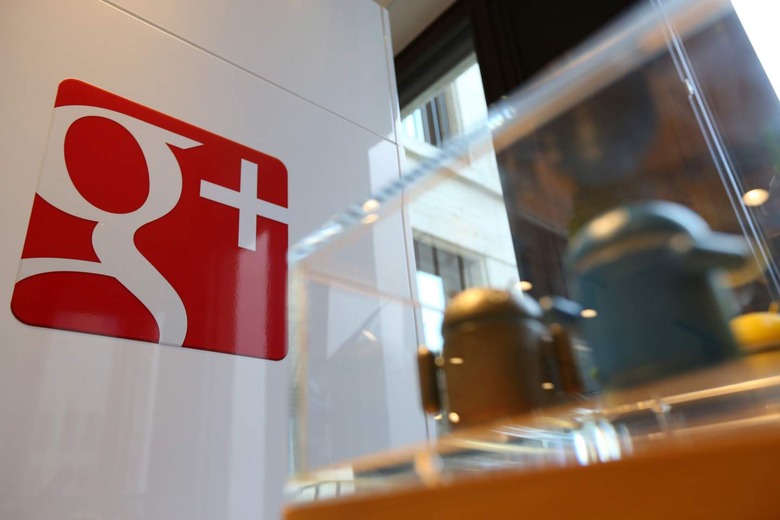Why Google+ Was A Complete Flop
Google+ was Google's high-stakes attempt to take on Facebook in the battle for social media. Despite being one of Google's more expensive endeavors, costing an estimated $585 million just to build (via Forbes), Google+ was a spectacular flop. Why it failed should be a warning to any company looking to disrupt a market.
Google+ was launched in mid-2011, a follow-up to the company's previous failed attempts to successfully break into the social media market. Just under eight years later, in April 2019, Google shuttered the service for both personal and business accounts.
By the end of its first year, Google+ was believed to have as many as 90 million users (via Digital Inspiration). That milestone alone seemed to illustrate the potential Google+ had to give Facebook a run for its money. In reality, however, Google's platform barely made a dent. In fact, by 2015 researched seemed to indicate that less than 10% of Google+ accounts were active (via Perficient). Even more telling, when Google announced the platform's shutdown, it revealed that 90% of user sessions lasted less than five seconds.
There are a number of reasons why Google+ was such a complete flop.
Why Google+ Failed
One of the biggest issues Google faced was trying to tackle Facebook's dominance directly. By 2011, Facebook was already the 800-pound gorilla in the social media space. Trying to take it on directly, without some killer new feature, was a fool's errand.
Another major mistake Google made was being far too pushy in trying to attract users. As Forbes highlights, then-CEO Larry Page linked Google's employee bonus to the success of Google+. Employees could see their bonus go up or down as much as 25% based on the platform's success. This, in turn, prompted employees to aggressively try to recruit people, fitting Mike Elgan's description of "spamming Grandma for cash." Ultimately, such behavior often turns off more users than it attracts.
A third reason Google+ failed was because of inconsistent branding and direction from the company. In the early days of the platform, Google would delete the pages of businesses and brands, only to later do an about-face and welcome businesses (via BBC). Unfortunately, by that point the damage was done and many businesses never returned.
A fourth reason the platform failed was because Google approached it just as they did their previous attempts at social media — not listening to what users want. Unfortunately, the most brilliant programmers and engineers in the world often make the worst user experiences. That realization is one of the reasons Apple has been so successful since it lets designers — focused on the user experience — call the shots. This is a lesson Google has never fully learned, and Google+ is one of the prime examples.
A fifth reason for Google's failure was its poor execution, especially in the realm of protecting its users. In fact, towards the end of the platform's existence, it came to light that some 52.5 million users' data was leaked for at least three years (via Brainium). When a company is entering a market where it is the underdog, it cannot afford to make any mistakes with its execution, especially not mistakes that endanger the privacy and security of its users.
Google+ was ultimately an expensive and embarrassing flop for Google, but its failure was not unexpected or hard to foresee. Any company wanting to break into an established market would do well to learn from Google's mistakes.

